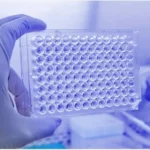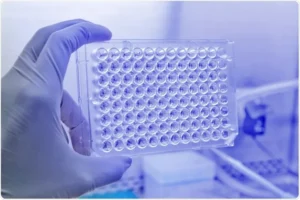Cell proliferation is a fundamental aspect of cell cycle research. Today, researchers have numerous reasons to measure cell proliferation. Some primary reasons for measuring cell proliferation include evaluating immune responses, tissue repair, stem cell renewal, and assessing drug efficacy and toxicity. Besides, cell proliferation is determined through routine cell culture experiments. This step helps verify cellular health and identify phenotypic changes, potential contamination, or genetic drift in a cell culture.
Estimating cell proliferation is crucial for immunooncology research. Scientists want to assess modifications in proliferative markers such as cell cycle regulators to assess cancer progression and determine potential treatment alternatives. Additionally, T cell proliferation is crucial for understanding T cell activation and their ability to attack cancer cells. Researchers have multiple options for cell-based screening assays and cell-based functional assays to evaluate cell proliferation. The current article discusses the importance of cell cycle analysis in cell proliferation assays.
Cell cycle analysis
Estimating cell cycle marker expression is a direct method to study cell proliferation. This method employs immunostaining. Common cell cycle markers include Ki67, PCNA, and Ser10. Besides, the fluorescent ubiquitination-based cell cycle indicator that utilizes mitotic phase-dependent expressions of cdt1 and geminin is another popular method for imaging live cells.
Cell viability is another indirect method to measure cell proliferation. This assay identifies the total number of live and healthy cell populations. However, cell viability assays are different from cell cycle analysis as not all viable cells will be proliferating, instead cells that are in a proliferative state are a subset of the viable cell population.
Cell growth and preparing cells for division among two cell divisions is termed the cell cycle. A complete cell cycle has distinct phases where the length of a particular cell cycle phase is a crucial aspect of cell life. The movement of cells through different phases is governed by several exogenous and endogenous factors and cell cycle analysis focuses on discovering several elements of these factors.
Cell cycle analysis has multiple applications in cancer research. Hence, understanding the regulation and mechanism of cell proliferation is of utmost importance. Proliferation is orchestrated by complex events that are classified into individual stages of the cell cycle. The cell cycle involves replication of the DNA followed by division. Depending on the content of cellular DNA analysis, the cell cycle separates individual cells into G0/G1, S, G2, and M stages. Researchers employ HCS instruments or laser scanning cytometry to determine the total DNA content and derive a cell cycle distribution profile. They can combine the overall DNA content with maximum pixel peak value to differentiate mitotic cells. Besides, cell cycle assays can be readily combined with the estimation of other markers.
Another approach for understanding the cell cycle is the method developed and used by GE Healthcare. This method employs EGFP expressions as a reporter signal below the cyclin b1 promoter control. This promoter stops the production of EGFP into the late phases of the S and G2 cycle. The cytoplasmic retention sequence controls the cellular localization of the reporter protein, whereas the cycling b1 box controls its destruction. Hence, this approach determines cell cycle stages depending on the intensity and expression pattern of EGFP fluorescence.
























+ There are no comments
Add yours